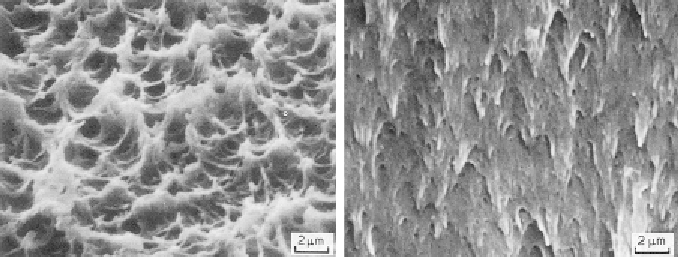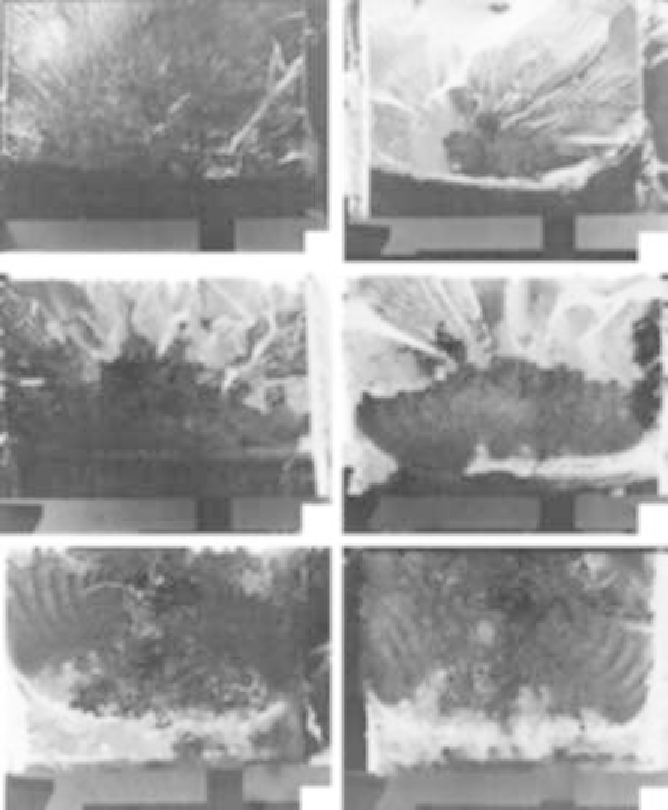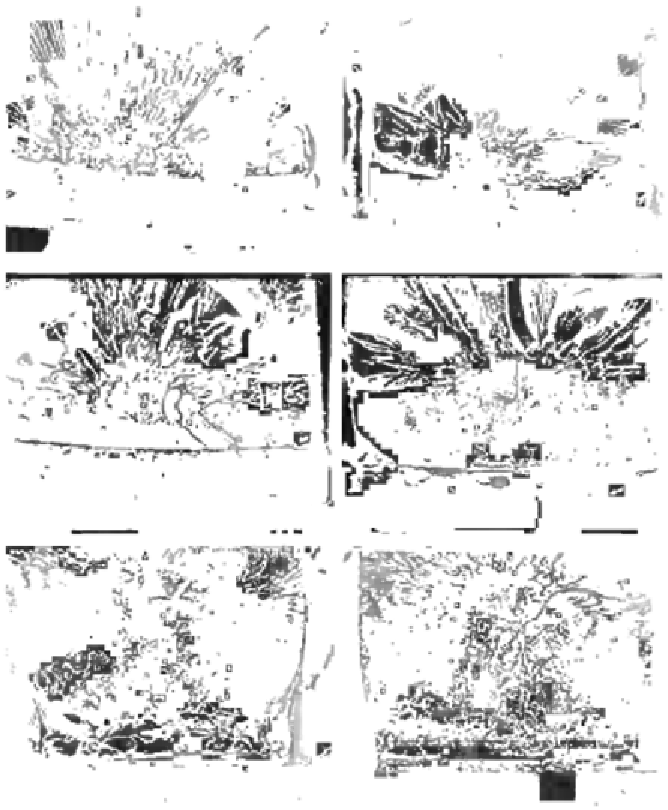Biomedical Engineering Reference
In-Depth Information
Figure 5.5
Fracture surface of
20% crystalline PEEK Charpy
impact specimens with different
notch radii. (a) Razor notch,
(b) 0.25 mm, (c) 0.5 mm,
(d) 1.0 mm, (e) 1.5 mm, and
(f) 2.0 mm. Courtesy of Ref.
[27]
.
(a)
(b)
(d)
(c)
(e)
(f)
Figure 5.6
Scanning electron
micrographs of fracture surfaces
of PEEK CT specimens. Left:
PEEK 150P showing “nucleus
pull-out;” right: PEEK 450G
showing “hood-shaped” features.
Courtesy of Ref.
[29]
.
(
Fig. 5.11
). Also, we found that there was a dramatic
change in the fracture micromechanism of PEEK in
monotonic tension with notching. The primary frac-
ture mechanism of the smooth specimens involved
a specimen yielding and necking [which is a function
of Von Mises (VM) stress] followed by cavitation
(dependent on hydrostatic stress) then void coales-
cence, flaw formation, crack growth, and final frac-
ture (
Fig. 5.12
). All the notched specimens showed
three distinct zones: zone I showed evidence of



